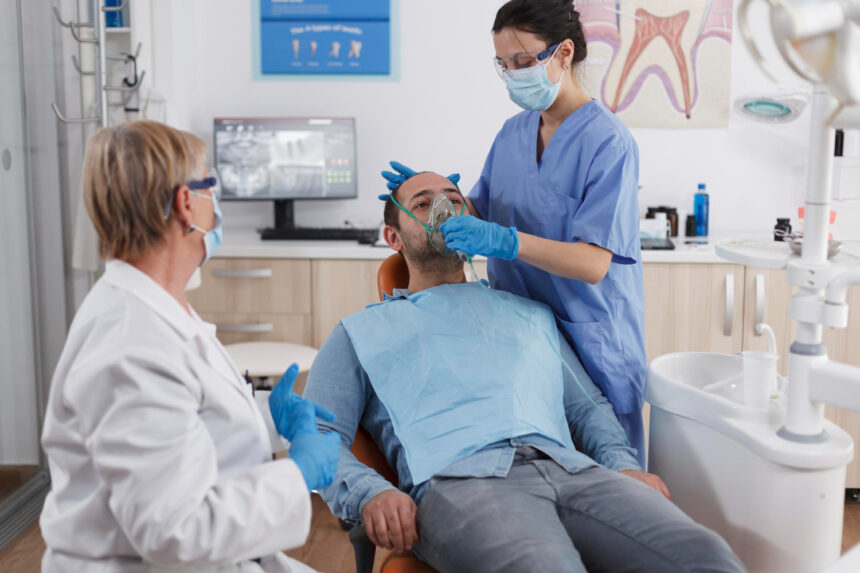Dental emergencies can be unexpected, painful, and often occur at the most inconvenient times. Whether it’s a severe toothache, a broken tooth, or an injury to your mouth, knowing how to handle a dental emergency can make all the difference in saving your tooth and relieving your pain. In this article, we will delve into the world of emergency dental treatment, exploring common emergencies, how to handle them, and when to seek immediate professional help.
Common Dental Emergencies
1. Toothaches
Toothaches are one of the most common dental emergencies and can range from mild discomfort to severe pain. The causes of toothaches can vary, including tooth decay, infection, or gum disease. If you experience a toothache, rinse your mouth with warm water and gently floss around the affected tooth to remove any trapped debris. You can also take over-the-counter pain medication to alleviate the pain temporarily. However, it is essential to see a dentist as soon as possible to diagnose and treat the underlying cause of the toothache.
2. Broken or Chipped Tooth
A broken or chipped tooth can result from trauma, biting on hard objects, or underlying dental issues. If you break or chip a tooth, rinse your mouth with warm water to clean the area. If there is bleeding, apply gentle pressure with a clean gauze or cloth. Save any broken tooth fragments if possible and see a dentist immediately. Depending on the extent of the damage, the dentist may restore the tooth with bonding material or recommend a crown or veneer to protect the tooth.
3. Knocked-Out Tooth
A knocked-out tooth is a severe dental emergency that requires immediate attention to have the best chance of saving the tooth. If your tooth gets knocked out, hold it by the crown (top part) and rinse it gently with water, being careful not to remove any attached tissue. Try to reinsert the tooth back into its socket if possible, or store it in a container of milk or saliva to keep it moist. Seek emergency dental care within 30 minutes for the highest chance of successful re-implantation.
4. Abscessed Tooth
An abscessed tooth is a serious condition that occurs when a bacterial infection causes a pocket of pus to form around the tooth root. Symptoms of an abscessed tooth include severe toothache, swelling, fever, and a foul taste in the mouth. An abscessed tooth requires immediate attention as the infection can spread to other parts of the body. Rinse your mouth with saltwater and seek emergency dental treatment to drain the abscess, prescribe antibiotics, and save the affected tooth.
Handling Dental Emergencies at Home
While it’s crucial to seek professional dental care for emergencies, there are steps you can take at home to manage the situation before seeing a dentist:
- Toothaches: Rinse your mouth with warm water, floss gently, and take over-the-counter pain medication.
- Broken or Chipped Tooth: Rinse your mouth, apply gentle pressure if there is bleeding, and save any broken tooth fragments.
- Knocked-Out Tooth: Try to reinsert the tooth or store it in milk or saliva before seeking emergency dental care.
- Abscessed Tooth: Rinse your mouth with saltwater and seek immediate dental treatment to prevent the infection from spreading.
When to Seek Professional Help
While home remedies can provide temporary relief, it’s essential to seek professional dental care for emergencies to prevent further damage and complications. Here are signs that indicate you need immediate dental treatment:
- Severe, persistent toothache
- Bleeding that doesn’t stop
- Swelling in the mouth, face, or jaw
- Loose or knocked-out tooth
- Signs of infection such as fever or foul taste in the mouth
If you experience any of these symptoms, do not hesitate to contact an emergency dentist or visit the nearest emergency room for prompt care.
Conclusion
Dental emergencies can be distressing, but knowing how to handle them can make a significant difference in saving your tooth and relieving your pain. By being prepared, understanding common emergencies, and seeking professional help when needed, you can navigate dental emergencies with confidence. Remember to maintain good oral hygiene, attend regular dental check-ups, and have the contact information of an emergency dentist on hand to ensure you are prepared for any dental situation that may arise.





